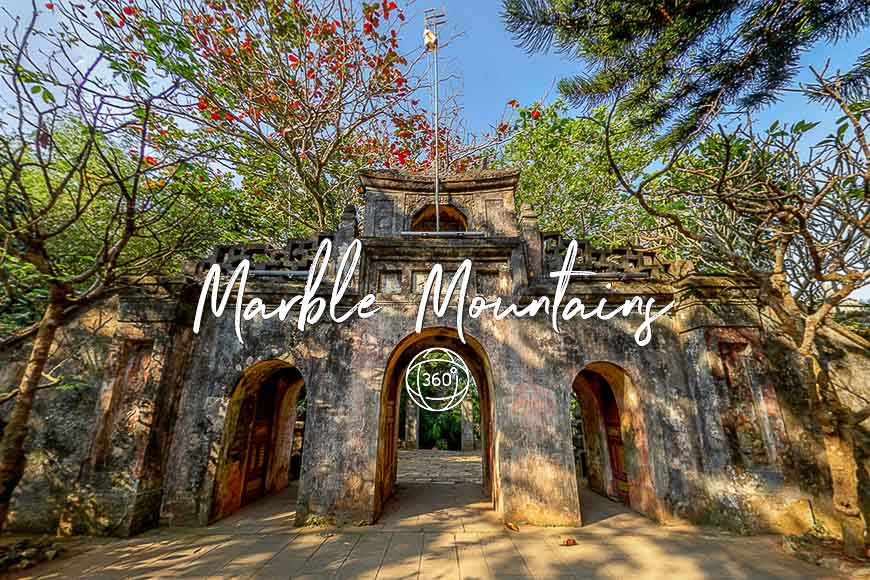You’ll have to climb more than a few steps to get up to Marble Mountains. These steps are cut from solid stone and each one takes you up the steep karsts and higher over the horizon. Before you know it, you’ve reached the top. Welcome to Marble Mountains. This riveting attraction outside Da Nang City is part historical treasure, part natural wonder, part spiritual setting, and totally beautiful. Read on for an insider guide to Da Nang's marvelous Marble Mountains.
The story of five mountains
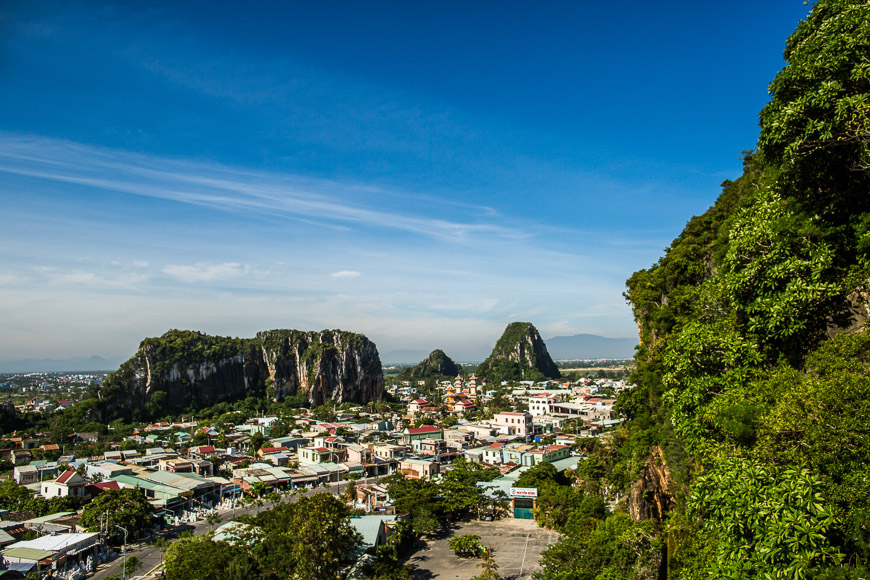
Marble Mountains is a group of five limestone peaks situated seven kilometres from downtown Da Nang. The five karsts (called Ngu Hanh Son in Vietnamese) are named after the five elements: Kim (metal), Thuỷ (water), Mộc (wood), Hoả (fire) and Thổ (earth). Over centuries, Marble Mountains has held special significance for the people of Central Vietnam. The ancient Cham revered the karsts as a spiritual site, and Vietnamese emperors from Hue and legendary generals passing through paid visits to the peaks, adding to their store of legends.
Today Marble Mountains is home to a network of caves, tunnels, towers, and pagodas built by Mahayana Buddhists and the Nguyen Dynasty Kings. The structures and shrines blend harmoniously with nature: Vine tendrils drip from above, frangipani and poinciana trees drop their blossoms on the stone paths, and the pagodas’ ornate roofs sparkle in the tropical sun. It’s a setting that easily captures the imagination.
TIP: Take your tour of Marble Mountains in the morning at 7am, when the air is cool for climbing and you can have the paths and pagodas all to yourself.
Click here to take a 360-degree tour of Marble Mountains
Cave discoveries
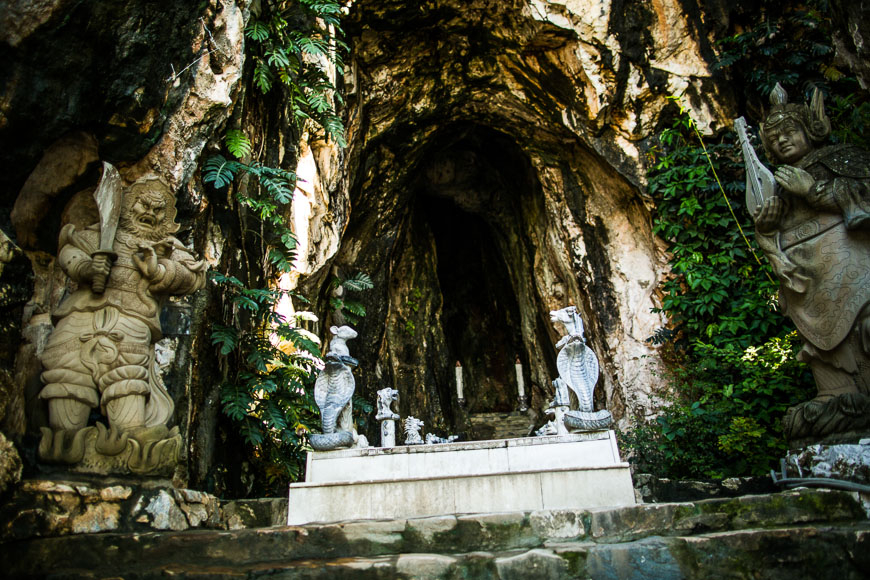
There are half a dozen large caves hidden away in the Marble Mountains, and many other small ones that are rarely visited. Most of the caves are cool inside, with the jungle plants and mossy walls creating an exotic atmosphere found nowhere else. All the caves in Marble Mountains have unique features, and some have fascinating stories of being discovered and used as hideaways over the centuries.
Huyen Khong is the largest of the caves, and a must-visit for Instagrammers. The collapsed ceiling allows shafts of light to pierce the dark cavern, creating dramatic spotlights inside. Huyen Khong was once used as a secret base and later a field hospital for Vietnamese revolutionaries. Its jaw-dropping size seems unlikely from the entrance, but is large enough to house a massive stone Buddha and two shrines. One of the shrines is dedicated to the god and goddess of match-making, and is a popular spot for couples and singles to worship.
On Water Mountain, Hoa Nghiem Cave is watched over by a beautiful 400-year-old stone statue of Lady Buddha’ and on Metal Mountain, Tang Chon Cave is worth a wander for the marble statues of chess players and mandarins placed inside the cave’s warrens. Set aside time to explore a few of the caves and find the one you like most.
Pagodas and shrines
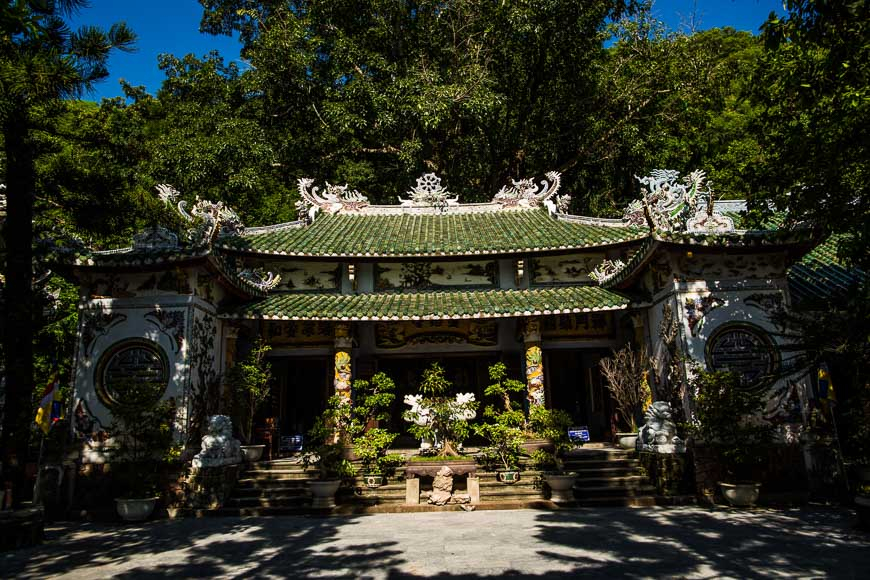
One of the best parts of touring Marble Mountain is seeing the striking pagodas that claim this elevated perch. Linh Ung Pagoda announces itself with an amazingly detailed archway facing the sweep of Non Nuoc Beach. Stop here for photos before wandering around the courtyard to admire the small lotus ponds, bonsai plants and tilework of the main structure. Nguyen Emperor Gia Long first ordered the pagoda built in 1825, and it bears many of the same motifs found in the UNESCO-listed tombs in Hue. A short walk away you’ll reach Xa Loi Tower. This 28-metre structure houses 200 statues of Buddha, and offers breathtaking views of the landscape below.
Across on Water Mountain, you’ll find Tam Thai Pagoda. This tidy pagoda, dedicated to the bodhisattva Phat Di Lac, has its own charming courtyard, and was rebuilt by the Nguyen Dynasty King Ming Mang more than 400 years ago, after falling into disrepair. Tam Thai is at its most serene in the early morning hours -- don’t miss it!
Before you go
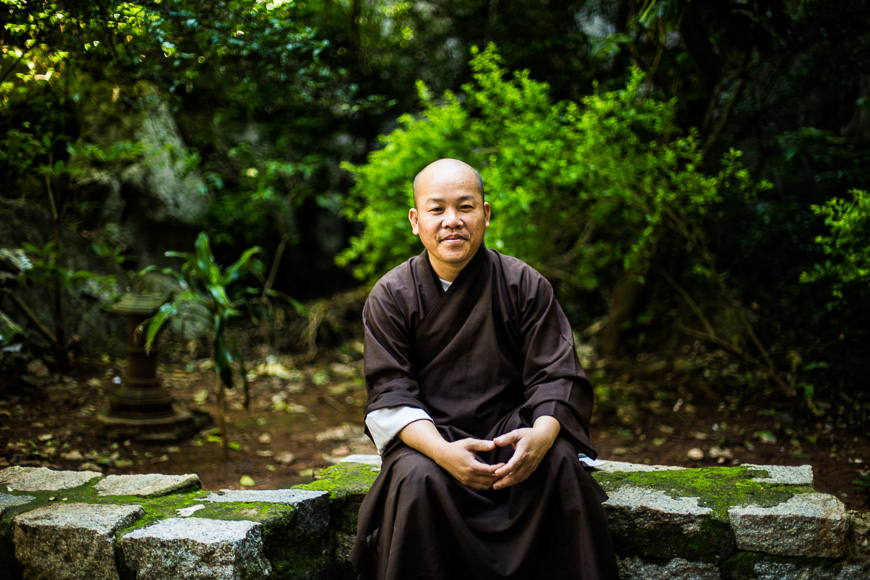
Marble Mountains (or Ngu Hanh Son in Vietnamese) are open daily from 7am to 5:30pm. You’ll want to set aside at least two hours to see Marble Mountains, and avoid coming during rainy season or in the hottest hours of the day. The entrance fee is 40,000 VND and the elevator should you use it is 15,000 VND.
Because you’ll be walking uphill a lot, be sure to wear comfortable walking or hiking shoes, and bring your sun hat and water along. Visitors are requested to wear modest clothing when touring Marble Mountains, which is an important spiritual and pilgrimage site. Be sure to remove your shoes and hat before entering any pagodas.


